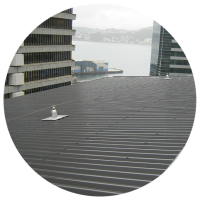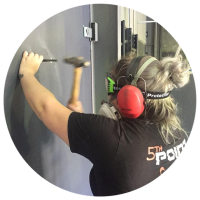Anchor points are attachment devices enabling access to otherwise unprotected edges and structures by trained personnel, and are designed for protection from falls from heights.
It is important to ensure the correct anchor system is selected for the site, as there many types of anchors. It’s important that installers are trained and competent to design and install the appropriate anchor system.
Designing Anchor Systems
Determining the purpose of the anchor (fall arrest, rope access or re-direction), along with appraising the surface’s suitability assists in the selection of appropriate anchor, and to the system layout.
At 5th Point, all our installers will help you design a bespoke System Layout Plan for anchor placement.
Anchor Types
Anchors are required to have a minimum breaking strength of 15kN (1500kg static load) for 1 person or 21kN (2100 kg static load) for 2 persons.
All anchors should be installed, tested and approved by a competent person in accordance with AS/NZS 1891.4: 2009 Industrial fall-arrest systems and devices – selection, use and maintenance.
Life lines and static lines create a horizontal anchor to which a lanyard can be attached allowing a range of movement along the path of the line. These lines must be installed and checked regularly by a competent person. Depending on the components used and relevant forces there will be limitations on use, including the number of persons who may be able to be connected at any one time.
Competent Installers
In line with AS/NZS 1891 a competent person is “A person who has, through a combination of training, education and experience, acquired knowledge and skills enabling that person to correctly perform a specific task”.
At 5th Point, all our installers have undergone training and certification in the design, safe installation and testing of a variety of anchor systems.
Maintenance & Testing
It is important that permanently installed anchor systems are frequently maintained and inspected in-line with manufacturers recommendations. Tagging anchors allows the history of installation and testing to be viewed by persons authorised to access the anchor site.
Tags are required to provide information on who the installer was, the date of installation and certification, the rating and purpose of the anchorage and the maximum number of people permitted to be connected to the anchor at any one time.
Contact us today!



Additional Resources
IRATA International Code of Practice (ICOP) Part 3: Annex F: Safety considerations when installing or placing anchor devices for use in rope access.
AS / NZS ISO 22846 Industrial Rope Access Systems
AS / NZS 1891 Part 4: Industrial Fall-Arrest Systems and Devices – Selection Use and Maintenance



